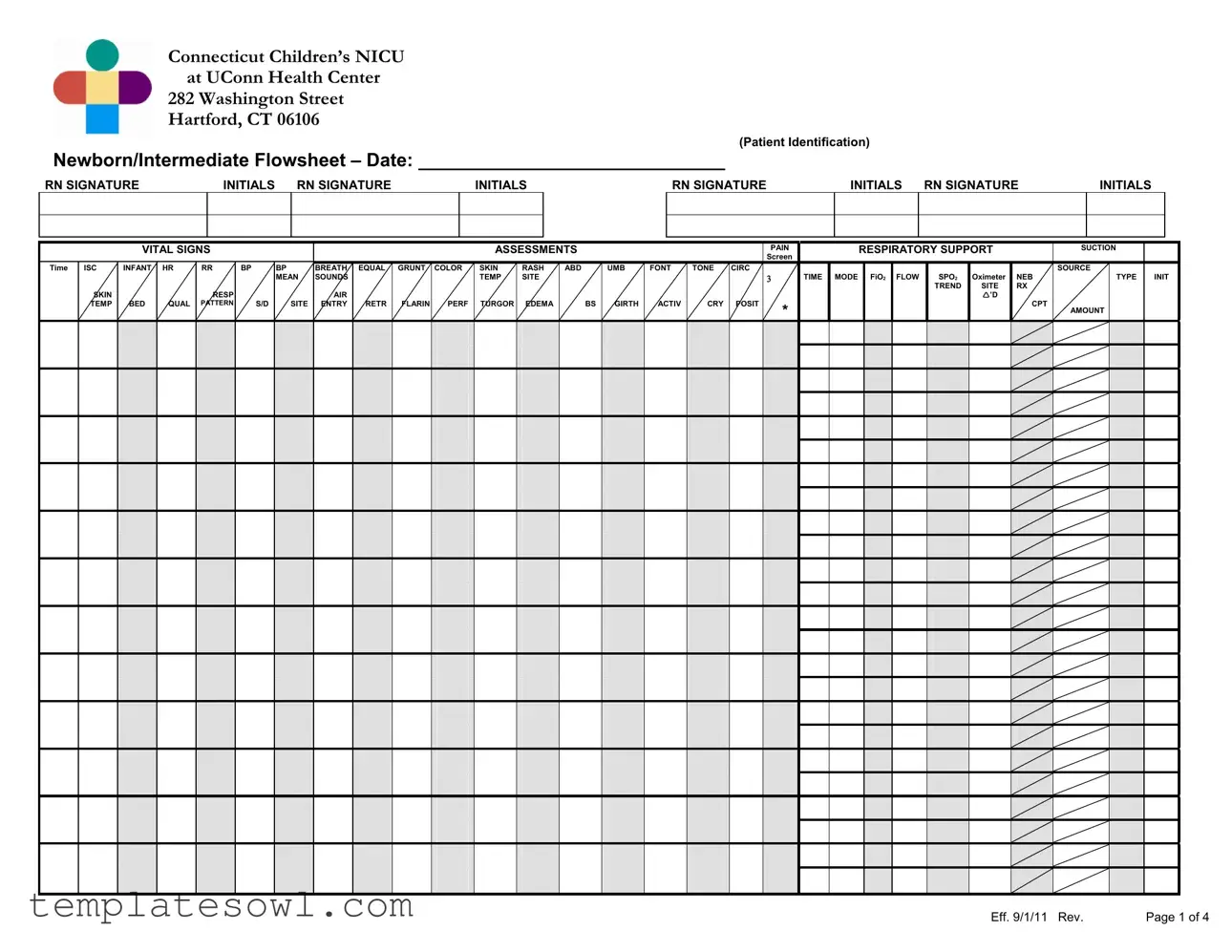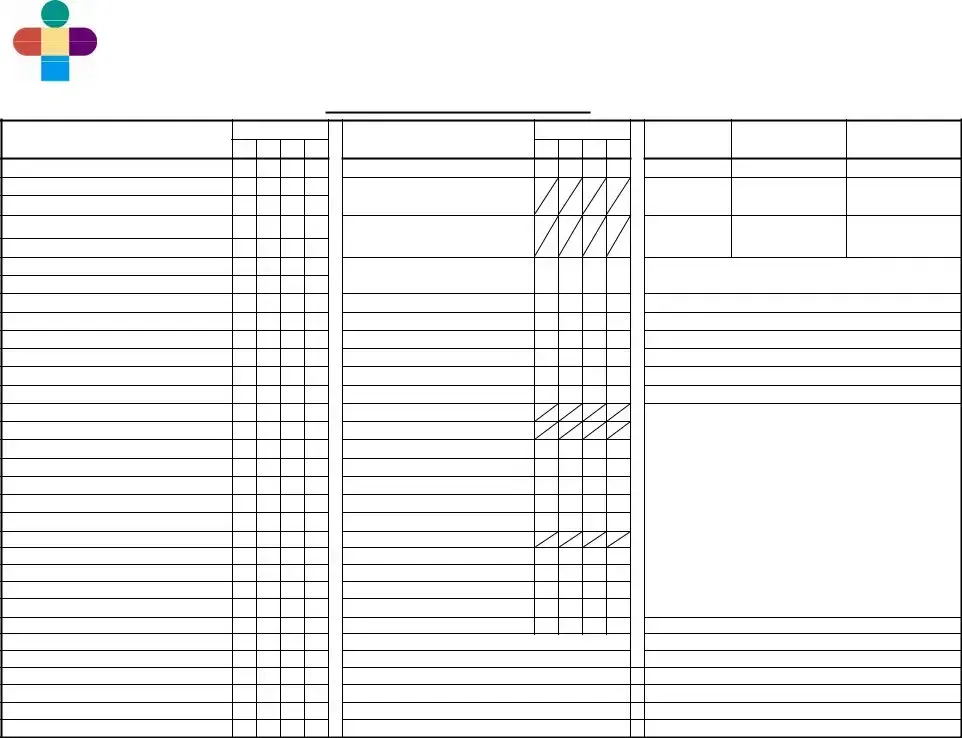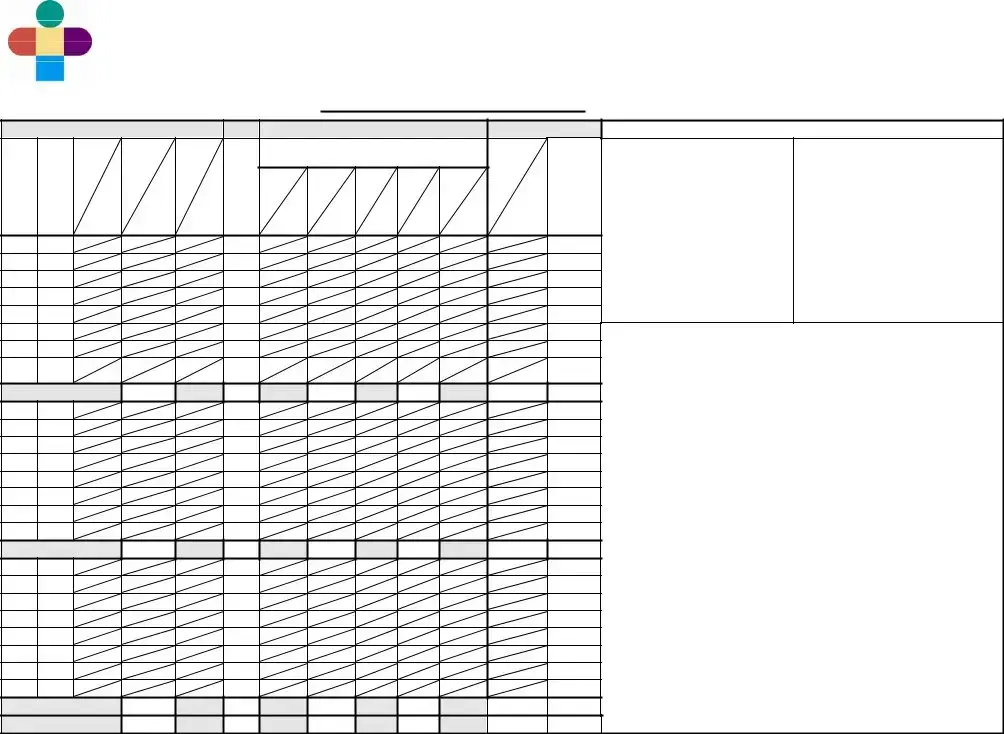What is the purpose of the ICU Flowsheet form?
The ICU Flowsheet form is designed to document and track vital information related to the care of newborns and infants in a neonatal intensive care unit (NICU). It provides a comprehensive way for healthcare providers to record vital signs, assessments, and treatments as part of the infant's clinical management. By maintaining detailed records, staff can ensure continuity of care and monitor any changes in the patient's condition.
What types of information are recorded on the flowsheet?
The flowsheet captures a wide range of information, including vital signs such as heart rate, respiratory rate, blood pressure, and temperature. It also includes assessments such as skin color, muscle tone, and behavioral indicators like crying or lethargy. Furthermore, it documents various treatments, such as breastfeeding or bottle feeding, medication administration, and respiratory support. This array of data aids in evaluating the infant’s health and response to care.
How do healthcare providers use the flowsheet during their shifts?
Healthcare providers use the flowsheet as a real-time tool throughout their shifts to record observations and interventions. Each vital sign check is entered, along with any assessments and actions taken for the infant's care, such as medications given or feeding responses. This systematic documentation supports effective communication among the care team and helps ensure that all staff members are up-to-date on the infant’s status.
Can parents access the information recorded on the flowsheet?
While the primary users of the ICU Flowsheet are healthcare providers, parents may have access to some information recorded in the flowsheet during communication with the care team. Parents should feel encouraged to ask about their child’s care, as the information in the flowsheet can aid in understanding their infant’s condition and treatment plan.
What are the key assessments included in the flowsheet?
The flowsheet includes various key assessments, such as pain assessment, respiratory support needs, feeding reactions, and neurological status. It assesses indicators like weight, behavioral responses to feeding, and any signs of distress. These assessments help practitioners monitor the infant’s well-being and adapt interventions as needed.
What is the significance of documenting vital signs and assessments accurately?
Accurate documentation of vital signs and assessments is crucial for patient safety and effective care. It helps identify trends that might indicate deterioration or improvement in the infant’s condition. Consistent and precise records also fulfill legal requirements and support quality assurance practices within the healthcare facility.
What training do staff need to effectively use the ICU Flowsheet?
Staff members working in the NICU typically undergo training that covers the use of the ICU Flowsheet. This training includes understanding how to capture vital signs and assessments correctly and the significance of each data point. Ongoing education is often provided to ensure that staff remain proficient in using the forms as part of patient care.
How often should the flowsheet be updated?
The flowsheet should be updated regularly, often with each shift change or as new assessments and treatments are administered. For critically ill infants, updates may be needed even more frequently to capture ongoing changes in their condition. Timely documentation ensures that all members of the care team have the most current information available.
What happens to the flowsheet at the time of discharge?
At the time of discharge, the completed flowsheet becomes part of the patient’s medical record. This documentation serves as a summary of care provided during the hospital stay and is crucial for continuity of care. Subsequent healthcare providers may refer to the flowsheet to understand treatment history and any ongoing needs for the infant following discharge.




